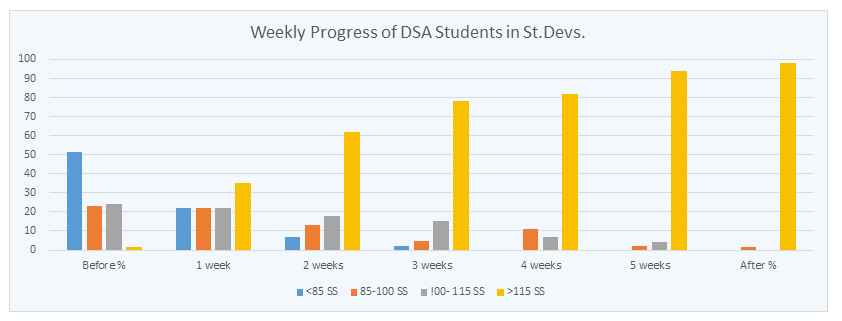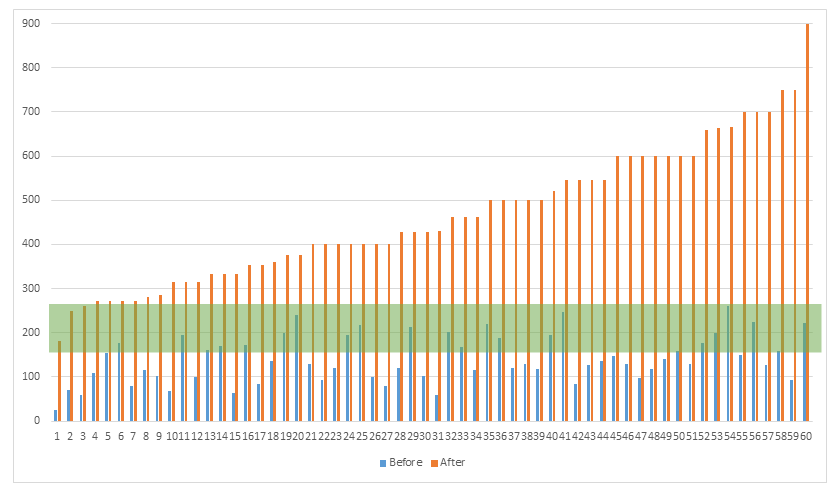The Extraordinary Impact of Visual Reading Through the Disabled Students Allowance (DSA). November, 2023
The Disabled Students Allowance (DSA) is a system of support in the
UK for all students in Higher Education with a recognised
‘disability’. This includes neurodivergent students.
The
process requires that the individual must have a formal assessment
recognised by the awarding bodies- Student Finance England (SFE),
Student Finance Wales (SFW), Student Finance Northern Ireland
(SFNI), or NHS Business Services Authority (NHSBSA).
This
enables the individual student to have a free Assessment of Need
which identifies what equipment, products or services will help to
level the playing field. This looks at both the educational
experience of the student, and the course requirements of their
prospective courses. The recommendations (and justifications) are
sent to the awarding body for their agreement to fund. Once agreed,
a supplier provides, or arranges, what has been agreed.
This
can include Visual Reading, which is on the list provided by SFE of
products that have been awarded through the DSA. This system has
been under review, and a modified system will be coming in January
2024 which reduces the current multiple suppliers and Access Centres
for the Assessment of Needs, to a single point of reference for each
student.

Chart 1: Reading Speed Improvement in Standard Deviations

Initial reading speeds varied from 26 to 261 wpm. The median reading speed
was 130 wpm. As we can see from Chart 1, in just two weeks, the progress
of DSA students exceeds a normal distribution, in that over 60% are
reading faster than the ‘average range’ for postgraduates, while just 7
percent remain below the average range. The course is completed in an
average of 5 weeks. The final reading speeds vary from 182 to 900 wpm
(with improved comprehension and recall). The final median speed is 429
wpm.
Individual Students
Breaking this down to individual students, arranged on the horizontal axis
from the slowest final reading speed to the fastest (shown in red), we can
see consistent dramatic improvements for every individual.
Chart 2: Reading Speed Improvement in wpm for DSA Students

The starting speeds are shown in blue for each student. The green shaded
area represents the ‘average range’ for postgraduate students (131-249
wpm).
The blue bars barely follow the contours of the red bars which visually
represents the low correlation between the original and final speeds
(r=0.45).
On average, reading speeds have increased by 3.6 times. This represents a
mean increase of 5.5 Standard Deviations (p 0.000). Comprehension:
Generally speaking, reading comprehension will vary according to a
multiple of factors, such as prior knowledge, interest in the content,
font size, font type, background colour, writing style and difficulty, the
medium, distractions, energy levels, vocabulary, tiredness, and
motivation. This makes measuring comprehension objectively extremely
difficult, since we cannot take account of all these factors. What we can
do, is model previewing and reviewing what is read and listen to student
feedback and their reporting of what they have understood. Visual Reading
coaches listen to the feedback to ensure that comprehension levels improve
during the intervention. This often has a dramatic impact on the students’
self-esteem and confidence, which is articulated in their feedback. Here
are some examples, but further feedback can be
found here.
“At the first appointment, I could not stop crying; as I
told my peers about the experience, I cried some more. Having the feeling
of comprehension is not something I can describe easily. The closest to it
was a comment from a lady with 40 years of experience in mental health
telling me that I reminded her of a child who can hear for the first
time.” (47 year old psychotherapy student now reading at 430 wpm).
“My speed and comprehension has increased tenfold and has
effected my academic reading skills positively.” (Radiography student)
“Amazing! I found this course extremely helpful. My reading speed and
comprehension skills have drastically improved! I would 100% recommend
this course.” (3rd year undergraduate)
“The process of
gradually widening saccades and implementing the metacognitive techniques
of pre-viewing and reviewing the text has improved my speed greatly and
comprehension is very good. The fact that I get through the chapters at
pace – and with good comprehension - means I don’t lose focus and give up
the book after three arduous chapters because I have already forgotten the
beginning of the book! That was what used to happen. Now I read whole
books because reading suddenly feels easy and pleasurable which is
something I have never experienced before! It is incredible. And it is
simply joyful.” (Mature student).
Referrals by Assessors of Need:
There are thousands of dyslexic students in receipt of the
DSA who would benefit from Visual Reading. This short blog is intended to
raise awareness amongst Assessors of Need that Visual Reading is a
powerful product on the SFE approved list at their disposal. The
justifications for recommending it include:
Slow reading speed
Poor comprehension, or recall
Difficulty decoding words
Difficulty
recognising words
Difficulty tracking text
Visual Stress.

